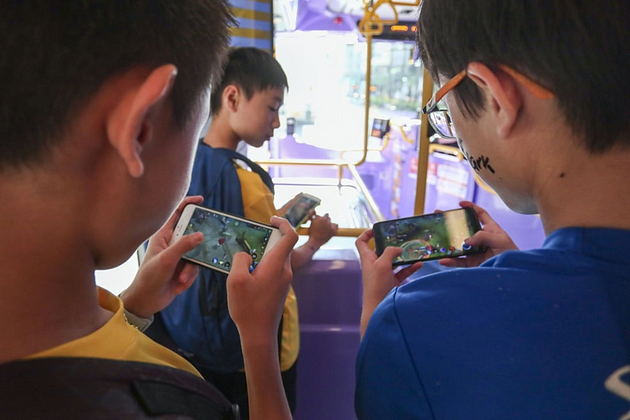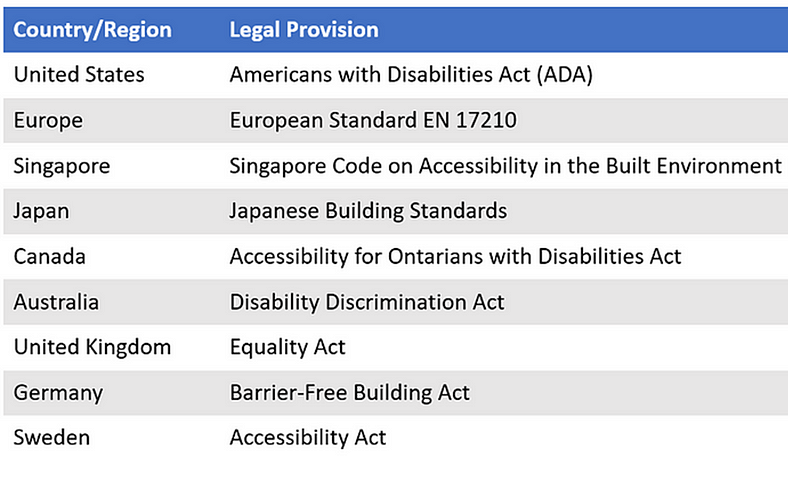
Introduction
Children across the globe are engrossed in virtual worlds, but in China, this infatuation often comes with a hefty price tag. Our journey today takes us deep into the intriguing world of video gaming, its impact on young minds and pockets, and China’s vigilant response.

The phenomenon of Children Spending Money on Video Games in China
As our investigation peels away the layers of digital mystique, we find Chinese youth captivated, navigating through animated worlds filled with thrilling escapades. However, a concerning trend has emerged: powered by addictive gaming mechanics, societal pressures, and clever marketing tactics, children invest considerable sums of money into these digital domains. Our exploration delves further into this digital age phenomenon’s financial and psychological implications.


Massive Amount of Spending on Video Games
Underage online spending is surging in China, with alarming instances such as an 11-year-old spending 400,000 yuan (US$56,871) on games and streaming tips and a 10-year-old tipping a game streamer 100,000 yuan (US$14,217). A 12-year-old also spent 110,000 yuan (US$15,640) on skins, while another spent 34,306 yuan (US$4,878) on a gaming platform, equating to his parent’s yearly savings. In Xiji County, a child unknowingly spent over 17,000 yuan (US$2,417) on mobile games.
As shown in the “Report of a sample survey on the consumption views of minors in Zhejiang”, minors use their pocket money for shopping on online e-commerce platforms; 37.59% use it to top up online games; 26.91% also have the habit of spending virtual money, etc.
Why are Minors Keen on Games, even Spending all their Pocket Money?
“King of Glory” immerses players in competitive battles, supplemented with different game modes like levelling up, adventuring, and ranking. Players can obtain skins and skills through in-game purchases, enhancing their competitiveness and chances of victory. The sense of accomplishment intensifies as they accumulate wins and ascend in overall rankings. The game’s social platform displays real-time orders, thus catering to the youthful player’s need for recognition and accomplishment.
Similarly, games like “Genshin Impact” and “PUBG Mobile” provide immersive worlds that serve as escapism, allowing minors to step into varying roles. Other competitive competitions, such as “King of Glory” and “League of Legends,” fuel a powerful sense of achievement and progression.
Moreover, the robust social components in these games provide a platform for minors to connect with existing friends and forge new friendships. This social interaction, combined with the capacity for character customisation and the games’ inherent reward systems, offers a unique form of personal expression and motivates sustained engagement.
Cultural trends and peer influence also play a part, creating a fear of missing out (FOMO) that further drives their interest in gaming. Lastly, the strategic challenges presented by games like “Three Kingdoms Tactics” allow younger players to develop critical skills like strategic thinking and problem-solving.
Existing Regulatory Measures in China
Turning the spotlight on the regulatory scene, we evaluate the efficacy of China’s safeguards against the pitfalls of minor-led gaming expenditures. Despite the proactive measures in the “Notice on Preventing Minors from Addiction to Online Games” and the latest 2021 guidelines, the gaming landscape’s relentless evolution poses unique enforcement challenges.
The “Notice on Preventing Minors from Addiction to Online Games”, published in 2019, introduces several measures aimed at curbing the excessive engagement of minors in online gaming.
Firstly, it mandates real-name registration for online game accounts, ensuring accountability and age verification. Additionally, it imposes restrictions on game services provided to minors, prohibiting access between 10:00 pm and 08:00 am.
Secondly, it sets specific time limits for gaming, allowing a maximum of three hours per day during statutory holidays and one and a half hours per day during other periods.
Lastly, the notice limits game payments based on age, with different caps on single recharge amounts and monthly cumulative limits for users aged below 8, between 8 and 16, and above 16 years old.

The latest regulations, published in 2021, limit online game providers can only offer one-hour services to minors from 8:00 pm to 9:00 pm on Fridays, Saturdays, and Sundays, as well as on official holidays.
Case Studies and Examples
The article presents several case studies of specific game titles and their monetisation strategies for children to provide a deeper understanding. It examines how these strategies incentivise spending and explore their impact on children’s spending habits and financial literacy. Here listed some companies’ measurements that regulations have effectively protected children’s interests, providing insights into potential strategies for mitigating the issue.

Case Study of Tencent Games
Tencent Growth Guardian App
It is an initiative developed by Tencent to provide a comprehensive online protection system for underage users. The app introduces parental control measures, encouraging a healthier digital environment for children and teenagers. This includes playtime restrictions, spending limits, and real-time monitoring of game activities, fostering responsible gaming habits and safeguarding young users from potential online risks.

The Efficiency of Tencent Games’ Effort
During the 2022 winter break, 7.92 million minor gaming accounts were blocked daily from logging into Tencent games outside permitted hours. Additionally, 9.40 million adult accounts daily triggered facial recognition during login and 0.43 million during payment. Due to verification issues, about 74.17% and 77% of funds were regulated at the login and payment stages.

The Newest Program of Tencent Games for Minors
Tencent Games has launched a comprehensive youth protection program, focusing on creating an informative and entertaining environment for healthy growth among young people. With initiatives like the creation of the Teenage Tech Space, the launch of the Virtual Simulation Lab, and the introduction of the “Intelligence and Physical Dual Hundred” plan, they aim to stimulate interest in technology and physical activities. This program signifies an innovative step towards integrating gaming technology into education and extracurricular activities, thus promoting a balanced lifestyle for the younger generation.

A ‘One-Size-Fits-All’ Total Ban on Minors Playing Video Games Sparks Controversy
1) Possibility of Revengeful Exploration
The proposal by a National People’s Congress representative to entirely ban minors from playing video games might lead to revengeful exploration. In other words, strict regulations might push children to find ways around the restrictions or burst into video games when they are over 18.
According to a 2022 report by QuestMobile, the average daily time spent by Generation Z individuals in China on King of Glory is 2.23 hours and on Peace Keeper Elite is 1.84 hours. If we prohibit all games for minors, wouldn’t they be more likely to indulge in gaming during their college years?

2) Universality of the Internet
With 75.60% of national internet users and 96.80% of minors using the internet, a complete ban on online gaming may be unrealistic and enforceable. Instead, education and guidance can play a crucial role. Children must learn to control their desires and manage their time effectively during their growth process.
3) Need for Clear Regulations and Restrictions
Legal and regulatory systems must establish clear guidelines and mechanisms to prevent minors from accessing or engaging in games. This includes addressing any loopholes in the login process, avoiding using parents’ passwords for direct payment, and ensuring that real-name verification or face recognition is not bypassed.
4) Limiting Types of Games for Minors
Another proposal could be to limit the types of games that minors can play. Restricting games with violent or gory content, or those that feature gunplay, could be a reasonable measure that balances the rights of children to play games with the need to protect them from potentially harmful content.
For example, the game, Oriental Empires, is set in ancient China, covering significant periods from 1500 BC to 200 AD. Through managing technological advancements, navigating realistic geography, engaging with critical historical events, and navigating diplomacy and warfare, students can gain a nuanced understanding of the development and challenges of ancient China.
Conclusion
This research underscores the importance of continuous monitoring and the need to adapt regulatory measures in line with the rapidly evolving gaming industry. Highlighting the potential long-term implications for the gaming sector and child protection in China, it calls for sustained efforts to safeguard young players’ financial and emotional well-being. As our understanding of the gaming world deepens, one fact becomes clear: proactive, adaptable, and comprehensive strategies are crucial in navigating the complexities of children’s engagement with video games.
Reference
“Chinese industry body declares initial victory in reducing video game addiction among minors, raising hopes for eased regulation”, 23 Nov 2022, South China Morning Post, https://www.scmp.com/tech/policy/article/3200609/chinese-industry-body-declares-initial-victory-reducing-video-gaming-addiction-among-minors-raising
“62.5%未成年网民经常玩游戏 国家出重拳防止沉迷网游”, 6 Sep 2021, China News https://www.chinanews.com.cn/gn/2021/09-06/9558976.shtml
“China further prevents minors’ addiction to online games”, 5 Nov 2019, Xinhua News http://english.www.gov.cn/statecouncil/ministries/201911/05/content_WS5dc12e61c6d0bcf8c4c16952.html
“China strengthens law enforcement to prevent online gaming addiction among minors” 8 Oct 2021, Xinhua News,
https://english.www.gov.cn/statecouncil/ministries/202110/08/content_WS616035a5c6d0df57f98e1588.html
“腾讯未成年人游戏时长三年下降96%,流水下降90%”, Sina, 17 May 2023, https://finance.sina.com.cn/stock/relnews/hk/2023-05-17/doc-imyuauqv2992480.shtml




